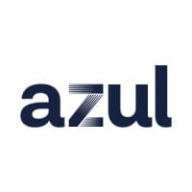

Microsoft .NET Framework and Azul Zing are competition in software development, each having unique strengths. Microsoft .NET Framework is notable for affordability and broad support, while Azul Zing leads with performance and scalability.
Features: Microsoft .NET Framework offers robust library support, seamless Windows integration, and powerful development tools. Azul Zing delivers ultra-low latency, high scalability, and advanced garbage collection for demanding applications.
Room for Improvement: Microsoft .NET Framework could improve cross-platform support and address bloat issues. Azul Zing may enhance documentation, expand community support, and lower initial costs to be more accessible to smaller companies.
Ease of Deployment and Customer Service: Microsoft .NET Framework ensures easy deployment within the Microsoft ecosystem with excellent customer support. Azul Zing provides compatibility with various operating systems, focusing on high-performance deployment.
Pricing and ROI: Microsoft .NET Framework initially costs less and generates a strong ROI due to lower deployment overheads. Azul Zing, though higher up front, offers substantial ROI through enhanced performance for high-throughput needs.

Zing is an advanced Java runtime (JVM) designed for enterprise workloads that require any combination of large memory, high transaction rates, low latency, consistent response times or high sustained throughput. Zing eliminates Java garbage collection as a factor in production, and conforms to the Java SE standard for Java SE 8, 7, and 6.
Microsoft .NET Framework is a software development framework for building and running applications for Windows, Windows Phone, Windows servers, XML Web services, and Microsoft Azure. The software is made up of two major components: Common Language Runtime (CLR) and the .NET Framework Class Library. The CLR is the execution engine that handles running apps and the Class Library is a library of tested, reusable code that developers can call from their own apps.
Microsoft .NET Framework Features
Microsoft .NET Framework has many valuable key features. Some of the most useful ones include:
Microsoft .NET Framework Benefits
There are many benefits to implementing Microsoft .NET Framework. Some of the biggest advantages the solution offers include:
Reviews from Real Users
Below are some reviews and helpful feedback written by PeerSpot users currently using the Microsoft .NET Framework solution.
PeerSpot user, Syed A., Principal System Developer at a government, says the solution is a “Great all in one framework with extensive stack for web applications, windows applications and mobile applications.”
A QA Supervisor at a manufacturing company mentions, “It comes with many features that you can interact with and has all of the libraries readily available, which is not available in the RPA platforms. You can create your own SSIS package. You can integrate with all of the Windows objects, which is not available in Automation Anywhere, and you need to rely on their Object Cloning technologies to interact with them.”
Brennan G., IS Technical Architect at Avara Foods Holdings Limited, comments, “It is easy to use, and it runs on a Windows platform. The .NET Framework is a very good framework. It does what I need it to do.”
We monitor all Application Infrastructure reviews to prevent fraudulent reviews and keep review quality high. We do not post reviews by company employees or direct competitors. We validate each review for authenticity via cross-reference with LinkedIn, and personal follow-up with the reviewer when necessary.